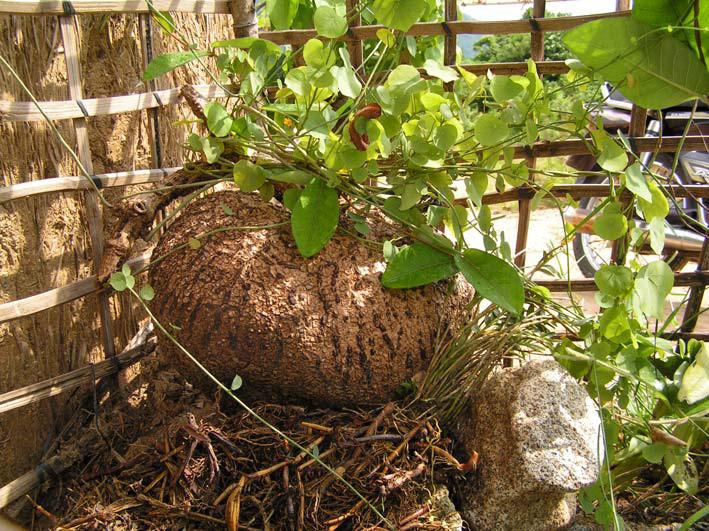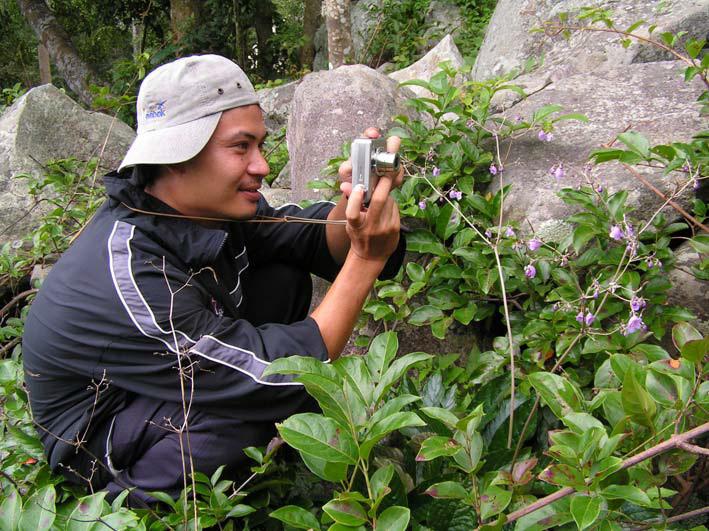Hong-Truong Luu
A survey of medicinal plants of Ta Kou Mountain, Ta Kou Nature Reserve, Vietnam

Tuberous Tinospora crispa (L.) Hook.
The goals of this project are to make an inventory and to assess the status of exploitation and trade of medicinal plants of Ta Kou Mountain in Ta Kou Nature Reserve, Vietnam (within 10041’28” to 10053’01” N latitude and 107052’14” to 108001’34” E longitude).

Mr. Do Thanh Phu – a team member taking photo before sampling.
Our former surveys indicated that medicinal plants were one of the most important resources of Ta Kou Mountain, accounting for 23% of 689 species of vascular plants recorded. Medicinal plants of Takou Mountain are important for the income and health care of local people. Medicinal plants are consumed not only within the bufferzone of the reserve but also traded far away. Additionally, many in thousands of pilgrims annually visiting pagodas on the mountain contribute to the consumption of medicinal plants harvested by local people. The over-exploitation of wood and medicinal plants has reduced many plants in the nature reserve. Many medicinal species have become very rare nowadays.
The stock of medicinal plant resource of Ta Kou Mountain needs to be evaluated quantitatively in order not only to conserve the biodiversity of the mountain but also to contribute to the sustainable income of local people. Medicinal plants are documented through a system of inventory plots placed across four forest types on the mountain. Information on the micro-climate conditions of medicinal plants obtained by the project will be helpful to the cultivation of medical plants outside the reserve. This will not only reduce the harvesting pressure on medicinal plants of the mountain but also contribute to improving the income and health care of local people.
Exploitation and trade activities are determined by conducting participatory rural appraisal (PRA) surveys with stakeholders. Furthermore, we hope to evaluate the role of medicinal plants in the livelihood of local people and to document traditional uses of medicinal plants.
By providing a thorough inventory of medicinal plants and a quantitative evaluation of the exploitation status, the project will contribute to a better understanding of the biodiversity, help identifying management problems and recommend suitable solutions for the conservation of medicinal plants of the study area. In addition, the project is hoped to raise the awareness among responsible authorities and local people about the status of rare medicinal plants which are currently harvested without control and to call for effective efforts in the conservation of medicinal plant resource.